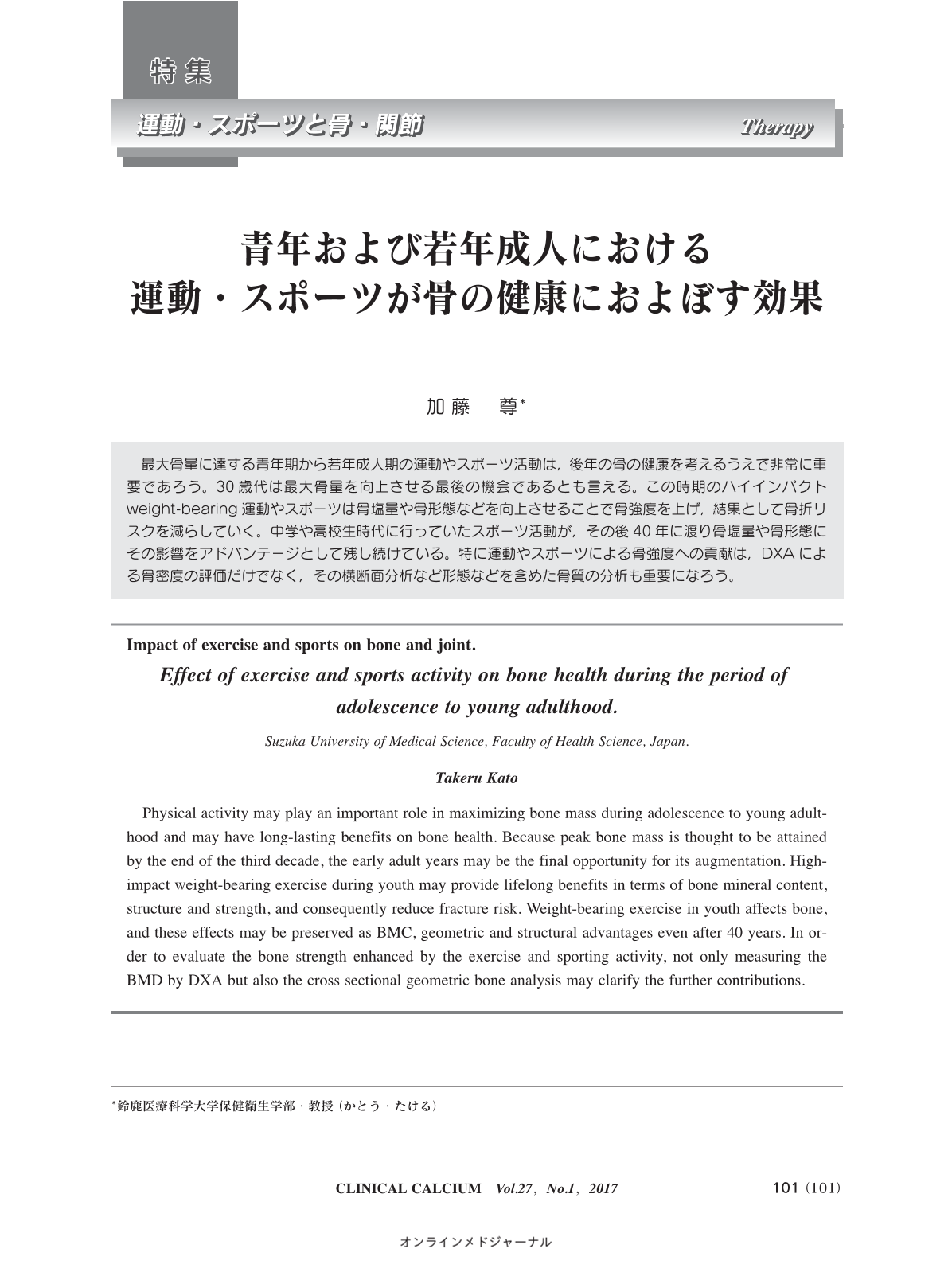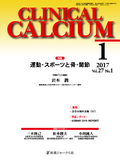Japanese
English
- 有料閲覧
- Abstract 文献概要
- 1ページ目 Look Inside
- 参考文献 Reference
最大骨量に達する青年期から若年成人期の運動やスポーツ活動は,後年の骨の健康を考えるうえで非常に重要であろう。30歳代は最大骨量を向上させる最後の機会であるとも言える。この時期のハイインパクトweight-bearing運動やスポーツは骨塩量や骨形態などを向上させることで骨強度を上げ,結果として骨折リスクを減らしていく。中学や高校生時代に行っていたスポーツ活動が,その後40年に渡り骨塩量や骨形態にその影響をアドバンテージとして残し続けている。特に運動やスポーツによる骨強度への貢献は,DXAによる骨密度の評価だけでなく,その横断面分析など形態などを含めた骨質の分析も重要になろう。
Physical activity may play an important role in maximizing bone mass during adolescence to young adulthood and may have long-lasting benefits on bone health. Because peak bone mass is thought to be attained by the end of the third decade, the early adult years may be the final opportunity for its augmentation. High-impact weight-bearing exercise during youth may provide lifelong benefits in terms of bone mineral content, structure and strength, and consequently reduce fracture risk. Weight-bearing exercise in youth affects bone, and these effects may be preserved as BMC, geometric and structural advantages even after 40 years. In order to evaluate the bone strength enhanced by the exercise and sporting activity, not only measuring the BMD by DXA but also the cross sectional geometric bone analysis may clarify the further contributions.



